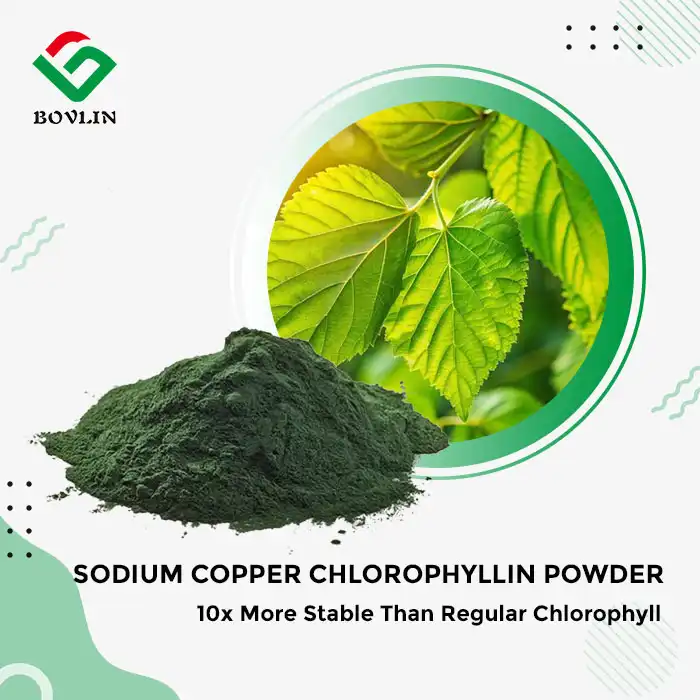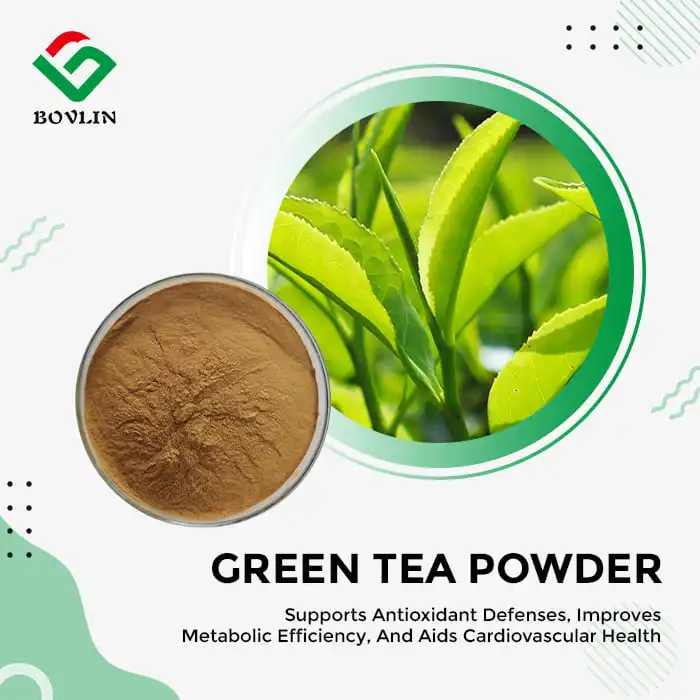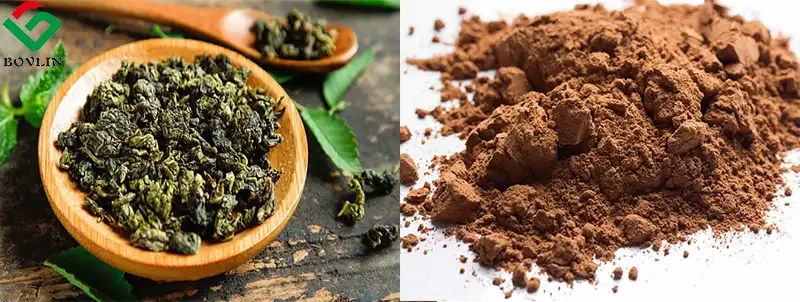How Does Instant Oolong Tea Powder Support Metabolism?
Thermogenic Properties and Energy Expenditure
Oolong tea powder exhibits remarkable thermogenic properties, which can be particularly beneficial for manufacturers developing products aimed at supporting healthy metabolism. The active compounds in oolong tea powder have been observed to increase energy expenditure, a process where the body burns calories to produce heat. This thermogenic effect is attributed to the unique composition of polyphenols, particularly catechins and theaflavins, found in oolong tea. These bioactive compounds work synergistically to enhance the body's metabolic rate, potentially leading to more efficient calorie burning. For companies formulating supplements or functional foods targeting weight management, incorporating oolong tea powder could provide a natural and effective ingredient to support their products' efficacy.
Lipid Metabolism and Fat Oxidation
Another significant aspect of instant oolong tea powder's metabolic support lies in its ability to influence lipid metabolism and promote fat oxidation. Research has indicated that the polyphenols in oolong tea may help activate certain enzymes responsible for breaking down fats in the body. This process, known as lipolysis, is crucial for effective fat utilization and storage regulation. Moreover, oolong tea powder has been associated with increased fat oxidation, where stored fats are broken down and used for energy. These properties make oolong tea powder an attractive ingredient for manufacturers developing products aimed at supporting healthy body composition and metabolic function.
Glucose Regulation and Insulin Sensitivity
Oolong tea powder's potential to support glucose regulation and enhance insulin sensitivity is another aspect that makes it valuable for metabolism-focused product development. The bioactive compounds in oolong tea have been shown to help modulate glucose uptake and utilization in cells, potentially contributing to better blood sugar control. This property is particularly relevant for manufacturers creating products targeting metabolic health and diabetes management. Additionally, some studies suggest that regular consumption of oolong tea may improve insulin sensitivity, allowing cells to respond more effectively to insulin and facilitating better glucose metabolism. For companies in the functional food and nutraceutical industries, these glucose-regulating properties of oolong tea powder offer opportunities to develop innovative products supporting overall metabolic wellness.
Antioxidant Properties of Instant Oolong Tea Powder
Polyphenol Content and Free Radical Scavenging
Oolong tea powder is renowned for its high polyphenol content, making it a potent source of antioxidants for product formulations. These polyphenols, including catechins, theaflavins, and thearubigins, play a crucial role in neutralizing harmful free radicals within the body. Free radicals are unstable molecules that can damage cells and contribute to oxidative stress, a condition linked to various chronic diseases and accelerated aging. By incorporating oolong tea powder into their products, manufacturers can harness its free radical scavenging capabilities, offering consumers a natural way to combat oxidative stress. This antioxidant-rich profile makes oolong tea powder an attractive ingredient for companies developing anti-aging skincare products, dietary supplements, and functional beverages aimed at promoting overall health and longevity.
Cellular Protection and DNA Preservation
The antioxidant properties of instant oolong tea powder extend beyond mere free radical neutralization to provide comprehensive cellular protection. Research has shown that the bioactive compounds in oolong tea may help safeguard cellular structures, including DNA, from oxidative damage. This protective effect is particularly valuable for manufacturers creating products focused on cellular health and anti-aging. By incorporating oolong tea powder into their formulations, companies can offer products that potentially support the body's natural defense mechanisms against environmental stressors and age-related cellular deterioration. This aspect of oolong tea powder makes it a versatile ingredient for use in a wide range of health and wellness products, from nutritional supplements to functional foods designed to promote longevity and vitality.
Anti-inflammatory Effects
In addition to its antioxidant capabilities, oolong tea powder has demonstrated promising anti-inflammatory properties. Chronic inflammation is increasingly recognized as a contributing factor to numerous health issues, including cardiovascular diseases, diabetes, and certain types of cancer. The polyphenols in oolong tea have been observed to modulate inflammatory pathways, potentially helping to mitigate excessive inflammatory responses in the body. For manufacturers in the nutraceutical and functional food industries, this anti-inflammatory potential offers an opportunity to develop products that support overall health by addressing one of the root causes of many chronic conditions. Incorporating oolong tea powder into formulations targeting inflammation-related health concerns could provide a natural and effective approach to promoting wellness and disease prevention.
Long-Term Health Benefits of Daily Consumption
Cardiovascular Health Support
Regular incorporation of oolong tea powder in product formulations may offer significant long-term benefits for cardiovascular health. The unique blend of antioxidants and bioactive compounds found in instant oolong tea has been associated with improved heart health markers. Studies have suggested that consistent consumption of oolong tea may help maintain healthy cholesterol levels, particularly by increasing HDL (good) cholesterol and reducing LDL (bad) cholesterol. Moreover, the antioxidants in instant oolong tea powder may contribute to better blood vessel function and reduced risk of atherosclerosis. For manufacturers developing cardiovascular health supplements or functional foods, oolong tea powder presents an opportunity to create products that support heart health through natural, plant-based ingredients. The potential to improve lipid profiles and promote overall cardiovascular wellness makes oolong tea powder a valuable component in long-term health maintenance formulations.
Cognitive Function and Neuroprotection
The long-term consumption of products containing instant oolong tea powder may also contribute to enhanced cognitive function and neuroprotection. The combination of caffeine and L-theanine found in instant oolong tea has been shown to improve attention, alertness, and overall cognitive performance. Furthermore, the antioxidants present in oolong tea powder, particularly EGCG (epigallocatechin gallate), have demonstrated neuroprotective properties in various studies. These compounds may help protect brain cells from oxidative stress and age-related decline, potentially reducing the risk of neurodegenerative diseases. For companies developing products aimed at supporting brain health and cognitive longevity, incorporating oolong tea powder can offer a natural and effective ingredient. The potential cognitive benefits make oolong tea powder an attractive option for formulations targeting memory enhancement, mental clarity, and overall brain health maintenance.
Bone Density and Osteoporosis Prevention
Another notable long-term benefit associated with regular Instant oolong tea powder consumption is its potential to support bone health and aid in osteoporosis prevention. Research has indicated that the bioactive compounds in oolong tea may help improve bone mineral density and strength. This effect is attributed to the tea's high fluoride content and its ability to enhance calcium absorption in the body. For manufacturers developing products targeting bone health, particularly for aging populations, Instant oolong tea powder can be a valuable ingredient. Its potential to support bone density maintenance and reduce the risk of osteoporosis makes it an excellent addition to formulations designed for long-term skeletal health. By incorporating oolong tea powder into their products, companies can offer consumers a natural approach to supporting bone strength and overall musculoskeletal wellness as part of a comprehensive health regimen.
Conclusion
Instant Oolong tea powder stands out as a versatile and potent ingredient for manufacturers in the health and wellness industry. Its ability to support metabolism, provide powerful antioxidant properties, and offer long-term health benefits makes it an invaluable component in various product formulations. From enhancing metabolic function and promoting cardiovascular health to supporting cognitive performance and bone density, oolong tea powder's diverse benefits cater to a wide range of health-conscious consumers. As the demand for natural, functional ingredients continues to grow, oolong tea powder presents an opportunity for companies to develop innovative, health-promoting products that align with current wellness trends and consumer preferences.
Contact Us
To explore how Instant Oolong tea powder can enhance your product line and contribute to your customers' well-being, contact Shaanxi Bolin Biotechnology Co., Ltd. at sales1@bovlin.com. Our team of experts is ready to assist you in incorporating this powerful ingredient into your formulations, helping you create products that stand out in the competitive health and wellness market.












